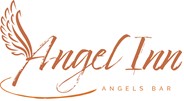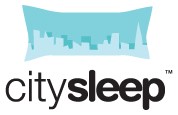Conversion Rate Optimisation or CRO is the ongoing process of making your website and any landing pages that you have created to be more effective in generating interest, signing up subscriptions and eventually converting visitors from lookers to bookers.
In order to convert website traffic to paying guests - now is a good time to ask yourself - how hard does your website work for you? Does it attract the right kind of visitors? Does your website have information and images that keeps visitors coming back for more? Would you want to buy from your website they way it looks and feels?
The rate at which visitors are converted into your customers is known as the “conversion rate.”
Conversion Rate = Number of visitors taking action / Number of visitors
In this context, a visitor “takes action” when they respond in some way that benefits your business for example they make a booking.
But visitors to a website are impatient, if they don't immediately feel comfortable, they’ll leave. A successful website owner understands this and prepares for this scenario with actions that:
- Hold the visitors attention (a sticky website)
- Create a simple sales path (not too many steps from looking to booking)
- Guide visitors each step of the way (keeping it simple)
- Build trust and credibility with the visitor through the way you interact with them
It’s believed that it takes website visitors three seconds to make up their minds as to what they should do when they land on your website. This is called the “three-second” or the “blink” test; pass they stay, fail and your visitor will leave and most likely visit a competitor or OTA (Online Travel Agent) to make a reservation.
One tactic often used is to ask a question to steer visitors into taking the next step towards conversion. Asking a question triggers a response that may divert attention to the question rather than any anxiety felt when they first land on your website. Visitors may be more willing to take your desired action as they let their defences down.
Conversions are critical if you’re running a hotel website because they have a direct impact on your revenue generation.
So how can you improve the rate of conversion on your hotel website?
Take a look at our nineteen conversion suggestions below to see if there is one or more ways to help you convert more of your online visitors into happy paying guests:
1) Create multiple Calls-To-Action (CTA's) buttons
While it’s good practice to include CTA's on a blog post for example, these sometimes fail to work because they feel like an afterthought - left to the end of the blog.
This lack of attention, coupled with the fact that website visitors don’t always read to the bottom of a blog post means that you need to work on which type of CTA works for your brand and property.
You need to consider what will be most effective, is it text with assertive language and a hyperlink or an image CTA that fits with your look and feel, and how many locations do you need to place it across your website without it getting too irritating?
2) Pop-ups
Pop-ups are designed to attract attention and offer relevant content to your visitor. You can select from different formats such as a slide-in box, drop-down banner, a full page take over or a pop-up box, depending on your offer and the user experience you want to provide your visitors.
It is tempting to litter your website with pop-ups, but take the time to use them on the pages that offer the best chance for conversion, don't make these a point of friction with your visitors with irrelevant content or in your face pop-ups when they exit the site.
3) Run A/B tests on how your website landing pages perform
A landing page is where a website visitor becomes a lead, or an existing lead starts to build a deeper relationship to become a prospect. A landing page plays an important role on your website, so you should run A/B tests to make sure you know what gets the highest conversion.
You can test different factors, for example:
- Headlines
- The offer details and format
- Colours of design elements (i.e. buttons)
- Images used for example a room shot, outside the property, etc.
- Number of CTAs and their location
The key with A/B tests is to change only one thing from variation to variation. You can only derive meaningful results from A/B testing if you are able to track back improvements in conversion rate to a specific change that you made.
4) Customer Value Proposition (CVP)
A customer value proposition describes the added value that you bring to your customers and that no one else can give them - it's what makes you stand out in the marketplace.
So how do you differentiate your property from the competition? Does it add value, what is the benefit, is this something that you can show in images or describe in words?
5) Your website or "shop window" the user experience (UX)
Being found online and creating a positive website user experience are key to engaging with your visitors. Landing on your website can be the first point of contact that a visitor has with you, so you need to make sure it is a seamless and easy experience – one to remember rather than rush to forget.
Below are some easy ideas to help you provide a positive user experience:
- Designing your website - You don’t need to have the flashiest website, but a basic approach that supports your business values and shows the visitor what they would get at your hotel
- Text - Make sure your colours work together, always test the legibility of what you write and be consistent across the website in terms of the fonts you use, their size and your overall tone of voice
- Image compression - the need for speed. A slow load time because of the number of images you have can be a showstopper if it starts to annoy your visitors
- Keep your site clean and clutter-free - Keep everything simple with only your most important content highlighted and focus on a great user experience
- Design with your customer’s behaviour in mind - Don’t forget the prevalence of your visitors use of the mobile to search and provide a responsive experience. You may also need to think about how your visitors use multiple devices as they explore the content on your website
6) What Keywords are visitors using to find your website?
If a visitor uses a search engine to find you, as most do - then it can be bad news for your search ranking if as soon as they open the site they jump off and return to their search, as the search engines incorporate visitor behaviour as a result of what they served up in their algorithm.
The best keywords to target are those that:
- Have a high search volume (people are looking for the keywords)
- Have low competition (smaller amount of results will mean your chances of ranking higher improve)
- Are supported by your content (the keywords are relevant to your site)
It is easy to forget that the person on the other side of the computer screen reading and digesting your content is human - and not a robot. So when you are creating content make sure you are focusing on the person and their needs and not writing with only a search ranking position in mind.
7) Create a sense of urgency
Informing your visitors that they have a limited time to act will help those that are in a position to buy to make a quick purchase decision.
Creating a sense of urgency helps to focus the mind and can help mitigate those buyers that suffer from analysis paralysis, who think about every conceivable option - but never make up their mind.
8) Use re-targeting to re-engage your visitors
When you look at the traffic that arrives at your website one thing that will stand out is that most people who visit don’t necessarily take the action you want straight away and they leave, hopefully to come back later.
By using re-targeting (sometimes known as re-marketing), you can re-engage people who’ve left your website and can continue to target an advertising message to them.
Re-targeting works by tracking visitors to your website and serving them online ads with a compelling offer as they visit other sites around the web via an ad-network.
9) Use Social Proof
Social proof is the idea that buyers will change their behaviour according to what they see other people doing. But there's more to it than that according to Buffer, there are actually six different types of social proof:
- Expert social proof is when an industry thought leader or influencer approves of your product.
- Celebrity social proof typically takes the form of a celebrity using a product and promoting it on social media or in public.
- User social proof consists of positive feedback from actual users, typically as customer reviews and testimonials.
- “Wisdom of the Crowds” social proof when lots of people are using or buying a product, others want to follow suit.
- “Wisdom of your Friends” social proof refers to the recommendations from people we know and trust.
- Certification is when you are given a stamp of approval by an authoritative figure in your industry.
10) Imagery and messaging should be aligned
Your imagery and text should be consistent in the message communicated to your target audience, your graphic design, colours and selection of imagery should back-up what you are writing about to build a sense of trust based on your agreed "tone of voice".
Your hotel’s unique personality should help to differentiate your business from the competition, aligning imagery and messaging will reinforce this positioning.
It is also a chance to reassure your visitor what they will experience at your property, so be careful with your selection of images to make sure that they represent the best that your property has to offer.
11) Learn how to tell your story
Storytelling is a powerful sales tool when it connects with the right audience.
Using the emotion of the story around your property so that you can differentiate yourself from the competition. Potential customers can also identify who you are and why you are different.
12) What is the customer experience really like? (CX)
It’s important to understand the journey your customers have, following them from their first contact with you, all the way to them booking a room night.
A carefully mapped out customer journey and an empathetic approach to your customers and these "moments of truth" will help you identify your weak spots, where you can improve customer experience and hopefully increase your sales conversions.
With so many new distribution channels, new devices, social media platforms, etc. it has made it much easier for consumers to be selective on what they view, at the cost of ignoring the rest. So when a visitor arrives on your website, are you ready for conversion?
You can reduce friction on your own website by taking small steps and testing them to see how they alter your conversion rates. But before you make changes ask yourself the following questions:
- Do you have testimonials from happy customers?
- How quick are your load times?
- What is your balance between images and written copy on your website?
13) What is going on with your "Sales Funnel"?
Figuring out where people exit your website can be a good indicator of why people leave, and help you to work backwards towards finding a particular touch point to focus on and improve your opportunity to convert sales.
Using Google Analytics to track where the site traffic enters, the number of steps users has to take while navigating from page to page, and tracing the exit point will all offer great insights.
A common mistake is to assume that if your visitor doesn’t progress along your sales funnel that they must have dropped out, never to be heard from again. But in today's digital world, buyers do behave differently. Moving around the funnel from one stage to another, entering and leaving at different points. So you cannot assume that all those that arrive at your website will buy in the same way.
Prospects are also moving across multiple devices and channels, as they jump into and out of the funnel at different stages. In the same sales funnel you’ll have visitors entering part way through the funnel, some will exit early, some will skip stages, and others will engage multiple times at the same stage - all in a non-linear way.
14) Do you have an effective targeting strategy?
It's frustrating to see large numbers of visitors landing on your site, but not see any sales conversions.
If you are getting the numbers but not the conversion, one of the first questions you should ask is whether you’re targeting the right people? Conversion should be thought of as a game of quality not quantity.
15) Data rules!
If you can collect and measure transactional data you should be able to draw some conclusions from your visitors behaviour.
Ensure that you are relying on data, not just your “gut feelings” on how to build your proposition and the way you present your information online to get the biggest impact.
16) Make your "site search" smart and simple to follow
The search function for the travel industry is critical. Only when a visitor selects a location and a date, will they find relevant results from which they can then start to consider their options.
Not only should your site search be fast, it should be as intuitive as possible. Not too much information to overwhelm the visitor, but enough to make them feel confident to carry on through the process and trust what they are reading.
17) "Judge the book by the cover"
Visitors will judge your business by the appearance of your website. Shoddy design, clumsy layout, misspellings, bad grammar, no professional endorsement badges are all signs of a possible fake site.
Online frauds especially within the travel sector are unfortunately quite common now, and visitors are ever more cautious about revealing their personal and credit card information online. So remember to do all you can to builds trust and authenticity with your visitors.
18) Reviews are a goldmine
Reviews are a great form of social proof in any kind of online business. But if you are into the travel business, their importance can’t be emphasised enough.
19) Have an effective online booking engine
With customers getting their first information about hotels online, property owners can now no longer ignore the need for an integrated online booking engine to be able to control the booking experience for their property and drive conversion.
HappyBooking have always focused on creating a user-friendly property management system based in the cloud that can help property owners improve their revenue performance with a direct booking engine, generate more profit by lowering commission costs and reducing admin time. So take a quick tour to see how it works - click here.
Take Away
HappyBooking is first and foremost a property management system. That means they help you with the boring admin and automate tedious tasks giving you more time to focus on your guests. On average HappyBooking customers can get back up to 10 hours per week – think what you could do with that extra time!
To help you find the time to focus on your guest experience, HappyBooking have written together with John Kennedy a Basic Revenue Management Guidelines for operators who manage hotels, hostels, apartments or meeting rooms.
You can download your free guide here.
Our guest blogger is John Kennedy.
John is a hospitality consultant, dedicated to helping increase revenue through marketing, revenue management and efficient operations. www.kennedyandersson.com
Image source: www.freepik.com



